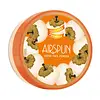What's inside
What's inside
 Key Ingredients
Key Ingredients

 Benefits
Benefits

 Concerns
Concerns

 Ingredients Side-by-side
Ingredients Side-by-side

Mica
Cosmetic ColorantKaolin
AbrasiveZinc Stearate
Cosmetic ColorantAvena Sativa Kernel Flour
AbrasiveTapioca Starch
Isopropyl Palmitate
EmollientOctyldodecyl Stearoyl Stearate
EmollientCalcium Silicate
AbsorbentParfum
MaskingDimethicone
EmollientSorbitan Sesquioleate
EmulsifyingWater
Skin ConditioningCaprylyl Glycol
Emollient1,2-Hexanediol
Skin ConditioningSodium Benzoate
MaskingAlpha-Isomethyl Ionone
PerfumingEugenol
PerfumingLimonene
PerfumingLinalool
PerfumingCoumarin
PerfumingHydroxycitronellal
PerfumingCinnamyl Alcohol
PerfumingGeraniol
PerfumingCitronellol
PerfumingBenzyl Salicylate
PerfumingAnise Alcohol
PerfumingCitral
PerfumingBenzyl Benzoate
AntimicrobialCI 77891
Cosmetic ColorantCI 77491
Cosmetic ColorantCI 77492
Cosmetic ColorantCI 77499
Cosmetic ColorantMica, Kaolin, Zinc Stearate, Avena Sativa Kernel Flour, Tapioca Starch, Isopropyl Palmitate, Octyldodecyl Stearoyl Stearate, Calcium Silicate, Parfum, Dimethicone, Sorbitan Sesquioleate, Water, Caprylyl Glycol, 1,2-Hexanediol, Sodium Benzoate, Alpha-Isomethyl Ionone, Eugenol, Limonene, Linalool, Coumarin, Hydroxycitronellal, Cinnamyl Alcohol, Geraniol, Citronellol, Benzyl Salicylate, Anise Alcohol, Citral, Benzyl Benzoate, CI 77891, CI 77491, CI 77492, CI 77499
 Reviews
Reviews

Ingredients Explained
These ingredients are found in both products.
Ingredients higher up in an ingredient list are typically present in a larger amount.
Parfum is a catch-all term for an ingredient or more that is used to give a scent to products.
Also called "fragrance", this ingredient can be a blend of hundreds of chemicals or plant oils. This means every product with "fragrance" or "parfum" in the ingredients list is a different mixture.
For instance, Habanolide is a proprietary trade name for a specific aroma chemical. When used as a fragrance ingredient in cosmetics, most aroma chemicals fall under the broad labeling category of “FRAGRANCE” or “PARFUM” according to EU and US regulations.
The term 'parfum' or 'fragrance' is not regulated in many countries. In many cases, it is up to the brand to define this term.
For instance, many brands choose to label themselves as "fragrance-free" because they are not using synthetic fragrances. However, their products may still contain ingredients such as essential oils that are considered a fragrance by INCI standards.
One example is Calendula flower extract. Calendula is an essential oil that still imparts a scent or 'fragrance'.
Depending on the blend, the ingredients in the mixture can cause allergies and sensitivities on the skin. Some ingredients that are known EU allergens include linalool and citronellol.
Parfum can also be used to mask or cover an unpleasant scent.
The bottom line is: not all fragrances/parfum/ingredients are created equally. If you are worried about fragrances, we recommend taking a closer look at an ingredient. And of course, we always recommend speaking with a professional.
Learn more about ParfumZinc Stearate is the metal salt of stearic acid. It is a white solid used to bind, thicken, and lubricate products.
This ingredient is common in powder makeup, where it helps keep the powder together.
Zinc Stearate is hydrophobic and repels water.
This ingredient can be sourced from non-animal or animal sources. It is best to reach out to the brand to see where they source this ingredient from.
Learn more about Zinc Stearate